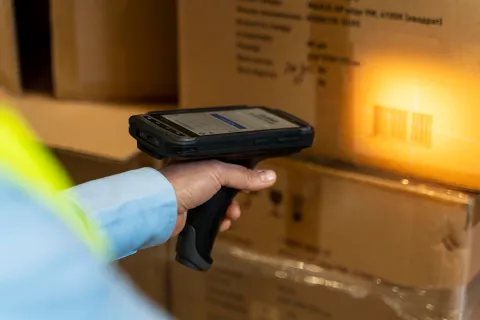
The pharmaceutical industry faces an unprecedented pace of Regulatory evolution. Label change management has become a high-stakes endeavor, with agencies like the FDA, EMA, and MHRA frequently updating guidelines. A single oversight in labeling can lead to costly recalls, delayed product launches, or compliance penalties. For companies offering pharmaceutical label management services, the ability to adapt swiftly while maintaining accuracy is no longer optional—it’s a competitive necessity.
This blog explores actionable strategies for streamlining label change management in dynamic Regulatory environments. It leverages cutting-edge technologies and best practices to ensure compliance, efficiency, and scalability.
1. Proactive Regulatory Monitoring with AI-Driven Insights
Regulatory updates are constant, but manual tracking is inefficient and can lead to errors. AI-powered Regulatory intelligence tools now enable real-time monitoring of global guidelines. Natural Language Processing (NLP) systems aggregate updates from Regulatory bodies, clinical trials, and competitor labels, flagging relevant changes for immediate action. For instance, AI can identify shifts in safety warnings or regional formatting rules, allowing teams to adjust labels before deadlines proactively.
By automating this process, companies reduce manual effort by up to 70% and minimize compliance risks. Implementing these tools can significantly enhance your organization’s ability to stay ahead of Regulatory changes and maintain accurate labeling across markets.
2. Cross-Functional Collaboration Frameworks
Label changes impact Regulatory affairs, quality assurance, supply chains, and marketing. Siloed workflows lead to delays and inconsistencies. Implementing cross-functional teams with clear roles accelerates decision-making:
- Regulatory experts assess compliance implications.
- Quality teams validate changes against internal standards.
- Supply chain managers coordinate rollout timelines to avoid disruptions.
Cloud-based platforms can unify stakeholders with shared workflows, automated notifications, and audit trails. This approach cuts review cycles by 50% and fosters a culture of collaboration that enhances overall operational efficiency.
3. Automate Repetitive Tasks with AI and RPA
Automation is transforming label management:
- Generative AI drafts label content using approved templates, reducing human error.
- Robotic Process Automation (RPA) handles bulk updates, such as translating labels into 20+ languages while maintaining consistency.
- Machine Learning (ML) analyzes historical data to predict compliance gaps or bottlenecks.
For example, implementing Document Translation Automation can significantly reduce translation costs while ensuring adherence to regional design standards. By embracing automation technologies, companies can focus on strategic initiatives rather than getting bogged down in repetitive tasks.
4. Risk-Based Prioritization of Changes
Not all label updates carry equal urgency. A risk-tiered approach prioritizes high-impact changes (e.g., safety warnings) over minor adjustments (e.g., typographical fixes). Steps include:
- Risk scoring: Evaluate impacts on patient safety, compliance, and market access.
- Digital twins: Simulate changes in virtual environments to identify supply chain bottlenecks.
- Post-implementation reviews: Analyze outcomes to refine future processes.
This strategy allows organizations to allocate resources more effectively and respond promptly to critical updates that could impact patient safety or Regulatory compliance.
5. Centralized Content Management with SCCA
Fragmented data sources lead to version control errors and redundant work. Structured Component Content Management & Authoring (SCCA) systems enable:
- Single-source publishing: Update once and deploy globally.
- Version control: Track iterations and maintain audit trails for compliance.
- Real-time compliance checks: Flag discrepancies against Regulatory databases.
Adopting centralized content management systems ensures consistency across markets while simplifying updates and reducing the risk of errors during the labeling process.
6. Agile Implementation with Digital Tools
Even well-planned changes face logistical hurdles. Mitigate delays with:
- Just-in-time label printing: Partner with vendors offering on-demand production.
- Buffer inventory: Maintain reserve stock for high-risk products during transitions.
- eLabeling: Adopt digital formats to bypass physical artwork delays.
Utilizing digital tools allows companies to streamline their implementation processes and respond quickly to market demands without sacrificing quality or compliance.
7. Continuous Training and Compliance Audits
Regulatory landscapes and technologies evolve rapidly. Regular training ensures teams stay updated on:
- New tools: AI platforms, SCCA systems.
- Regulatory shifts: Emerging guidelines from health authorities.
- Best practices: Lessons from industry recalls or audits.
Establishing a culture of continuous learning prepares teams for inspections and fosters a proactive approach to compliance that can significantly reduce risks associated with label management.
Conclusion: Future-Proof Your Label Management
By integrating AI-driven automation, centralized systems, and cross-functional collaboration, companies can turn Regulatory challenges into opportunities for growth. Investing in labeling automation will empower pharmaceutical organizations to streamline their label change processes while ensuring compliance in any Regulatory environment, ultimately improving patient safety and operational efficiency.
Contact Freyr today to discover how our tailored solutions can streamline your label change processes and ensure compliance in any Regulatory environment.









